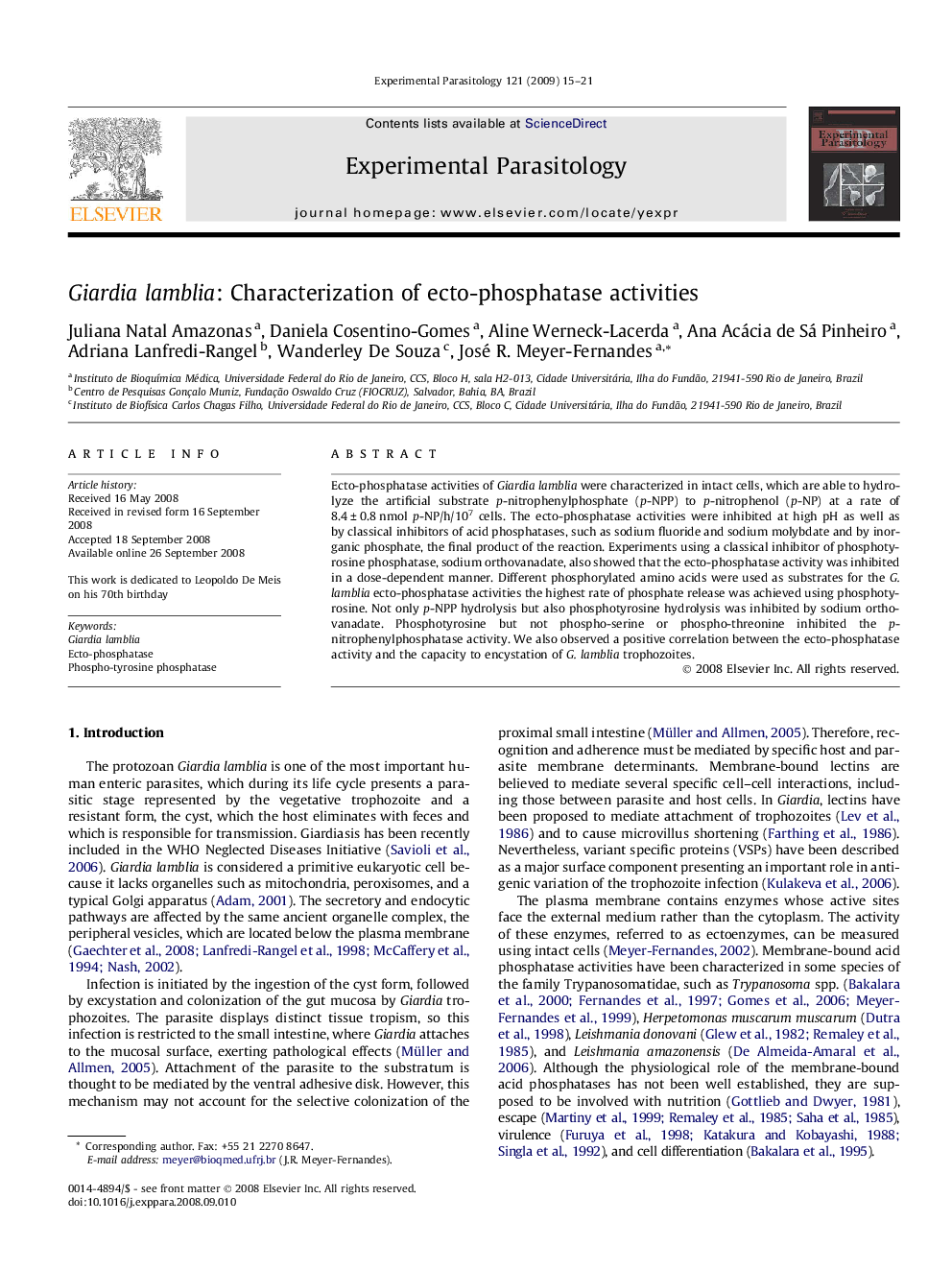| کد مقاله | کد نشریه | سال انتشار | مقاله انگلیسی | نسخه تمام متن |
|---|---|---|---|---|
| 4372033 | 1302559 | 2009 | 7 صفحه PDF | دانلود رایگان |

Ecto-phosphatase activities of Giardia lamblia were characterized in intact cells, which are able to hydrolyze the artificial substrate p-nitrophenylphosphate (p-NPP) to p-nitrophenol (p-NP) at a rate of 8.4 ± 0.8 nmol p-NP/h/107 cells. The ecto-phosphatase activities were inhibited at high pH as well as by classical inhibitors of acid phosphatases, such as sodium fluoride and sodium molybdate and by inorganic phosphate, the final product of the reaction. Experiments using a classical inhibitor of phosphotyrosine phosphatase, sodium orthovanadate, also showed that the ecto-phosphatase activity was inhibited in a dose-dependent manner. Different phosphorylated amino acids were used as substrates for the G. lamblia ecto-phosphatase activities the highest rate of phosphate release was achieved using phosphotyrosine. Not only p-NPP hydrolysis but also phosphotyrosine hydrolysis was inhibited by sodium orthovanadate. Phosphotyrosine but not phospho-serine or phospho-threonine inhibited the p-nitrophenylphosphatase activity. We also observed a positive correlation between the ecto-phosphatase activity and the capacity to encystation of G. lamblia trophozoites.
Journal: Experimental Parasitology - Volume 121, Issue 1, January 2009, Pages 15–21